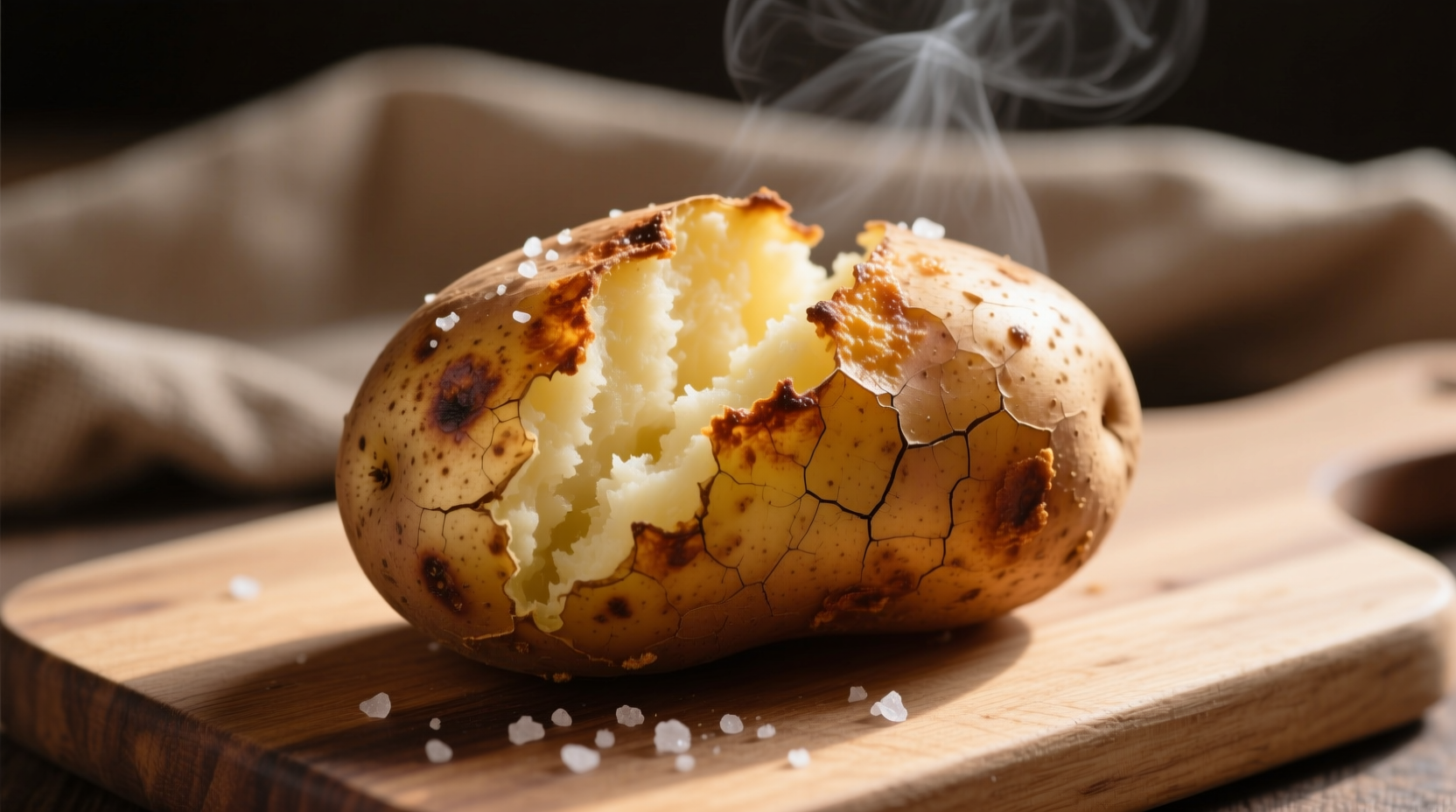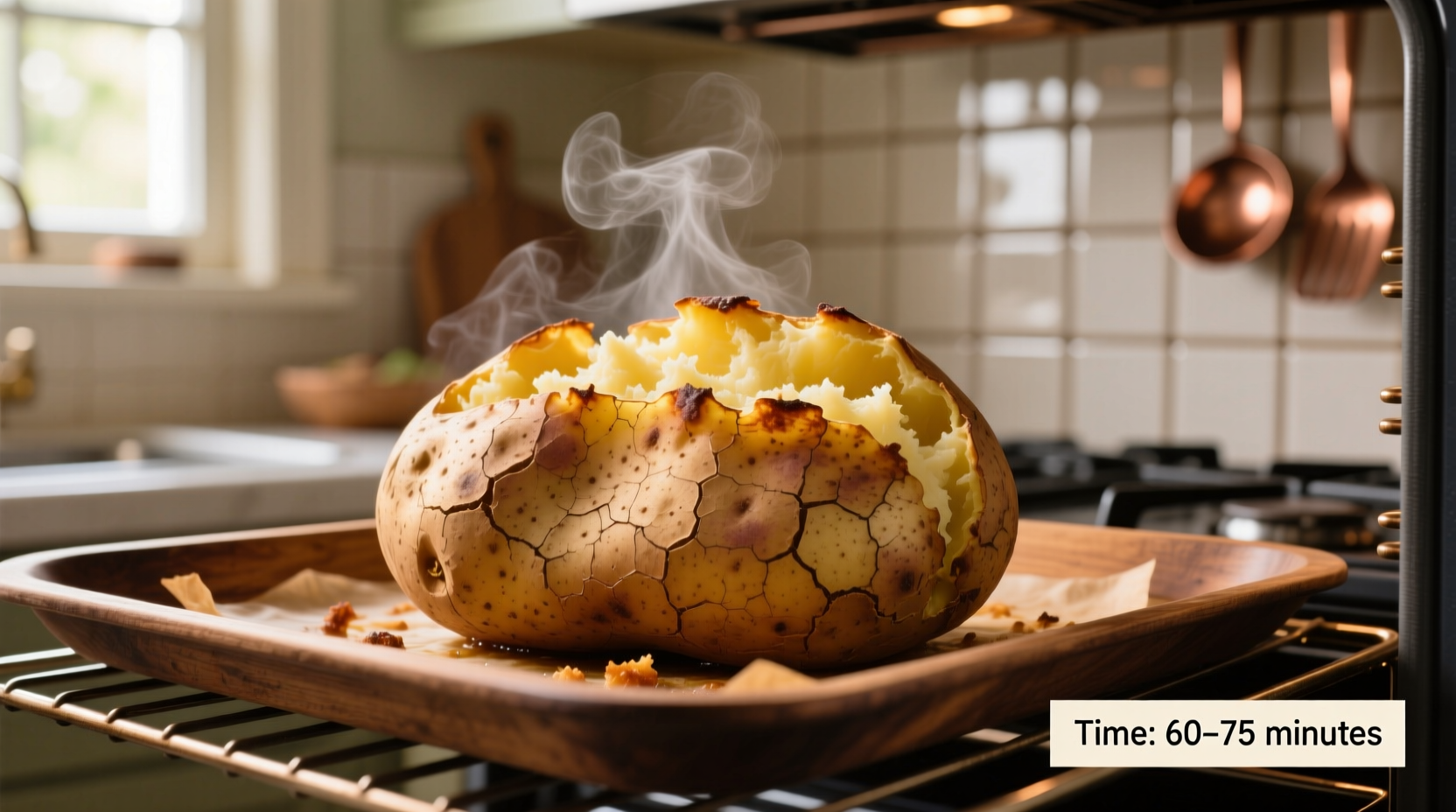Nothing beats the simple pleasure of a perfectly baked potato with crispy skin and fluffy interior. But getting that ideal texture requires precise timing and technique. After decades of testing in professional kitchens and home ovens, we've cracked the code for consistently perfect results every time.
The Science Behind Perfectly Baked Potatoes
Understanding the food science transforms your baking results. Potatoes contain starch granules that absorb water and swell when heated. At 205-212°F (96-100°C), these granules fully gelatinize, creating that signature fluffy texture. Baking at 400°F provides the ideal balance—hot enough to cook efficiently without burning the exterior.
According to USDA food safety guidelines, potatoes must reach an internal temperature of at least 205°F to ensure proper starch conversion and food safety. Using an instant-read thermometer eliminates guesswork and guarantees perfect results.
Step-by-Step Baking Process
Follow these professional chef-tested steps for foolproof baked potatoes:
- Select quality potatoes: Russets work best due to their high starch content. Choose uniform size for even cooking.
- Prep properly: Scrub clean, dry thoroughly, and pierce 4-6 times with a fork to allow steam escape.
- Season wisely: Rub with 1 tsp oil per potato and sprinkle with coarse salt for crispy skin.
- Position correctly: Place directly on oven rack with baking sheet below to catch drips.
- Monitor temperature: Check internal temp at minimum recommended time using instant-read thermometer.
| Potato Size | Weight | Recommended Time | Internal Temp |
|---|---|---|---|
| Small | 5-6 oz | 45 minutes | 205-210°F |
| Medium | 8-10 oz | 50-55 minutes | 208-212°F |
| Large | 12+ oz | 55-60 minutes | 210-212°F |
Common Baking Mistakes and Solutions
Even experienced cooks make these critical errors:
- Wrapping in foil: Creates steamed potatoes with soggy skin. For crispy results, bake uncovered.
- Incorrect oven placement: Potatoes on baking sheets cook unevenly. Direct rack placement ensures 360° heat exposure.
- Skipping the pierce step: Can cause potatoes to explode from built-up steam pressure.
- Guessing doneness: Always verify with thermometer—texture testing alone is unreliable.

Advanced Techniques for Exceptional Results
Professional kitchens use these pro tips to elevate basic baked potatoes:
- Pre-bake oil treatment: Rub with olive oil and sea salt 15 minutes before baking for extra-crispy skin.
- Temperature staging: Start at 425°F for 20 minutes, then reduce to 375°F to finish cooking without over-browning.
- Resting period: Let potatoes rest 5-7 minutes after baking—this allows residual heat to finish cooking the center evenly.
- Flavor infusion: Place fresh rosemary or thyme sprigs on the baking sheet for subtle aromatic notes.
When Standard Times Don't Apply
These context boundaries affect baking duration:
- Convection ovens: Reduce time by 10-15% due to more efficient heat circulation
- High altitude: Above 3,000 feet, increase time by 5-10 minutes as water boils at lower temperatures
- Frozen potatoes: Add 15-20 minutes to standard times when baking from frozen
- Multiple potatoes: Rotate positions halfway through cooking for even results when baking several at once
Remember that oven calibration varies significantly—most home ovens read 25-50°F lower than displayed. An independent oven thermometer costs less than $10 but dramatically improves baking accuracy. The National Center for Home Food Preservation confirms that proper oven calibration is the single most impactful factor in consistent potato baking results.
Frequently Asked Questions
Can I bake potatoes at a lower temperature for longer?
Yes, but with trade-offs. Baking at 350°F takes 65-75 minutes but yields less crispy skin. The extended time allows more moisture evaporation, potentially drying out the interior. For optimal texture, 400°F remains the professional standard.
How do I know when a baked potato is done without a thermometer?
Insert a fork or skewer into the thickest part. It should slide in with no resistance, like butter. The potato should feel soft when gently squeezed (use oven mitts!). The skin will appear slightly wrinkled, and you may see steam escaping from pierce holes.
Why are my baked potatoes taking longer than expected?
Several factors cause extended cooking times: oven running cooler than set temperature, very large potatoes, starting with refrigerated potatoes, or baking multiple potatoes that block heat circulation. Always verify oven temperature with a separate thermometer for accuracy.
Should I oil potatoes before baking?
Yes, but strategically. Rubbing with 1 teaspoon of oil per potato before baking creates perfectly crisp skin. Skip the oil if you prefer softer skin, but understand this changes the texture profile significantly. Professional chefs recommend oil for optimal results in standard ovens.











 浙公网安备
33010002000092号
浙公网安备
33010002000092号 浙B2-20120091-4
浙B2-20120091-4